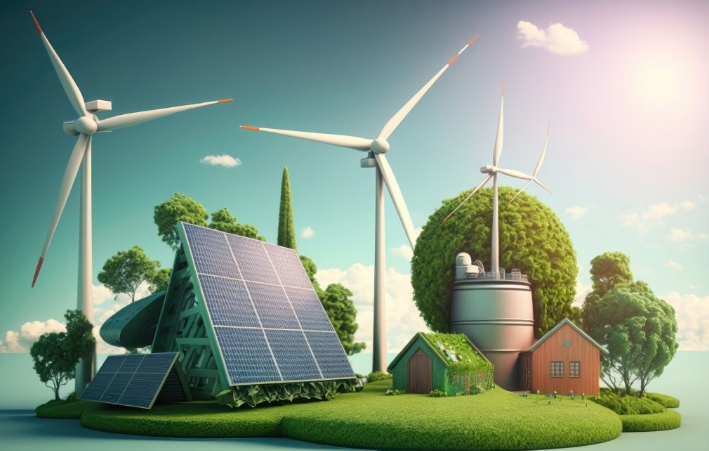As the world grapples with the urgent need to address climate change, 2024 has emerged as a pivotal year for renewable energy. This year has seen remarkable advancements in technology, policy, and global cooperation that are setting the stage for a more sustainable future. Here’s an in-depth look at the breakthroughs making waves in the renewable energy sector.
1. Advances in Solar Technology
Solar energy has long been a cornerstone of the renewable energy movement, but recent innovations are propelling it to new heights. In 2024, researchers have unveiled a new type of perovskite solar cell that boasts efficiency rates surpassing traditional silicon-based cells. These perovskite cells, made from materials that can be produced more cheaply and flexibly, offer a potential game-changer for the industry. They are lighter, more adaptable, and can be manufactured at a fraction of the cost of their predecessors.
Moreover, integration of solar technology with building materials is becoming increasingly common. The advent of solar roof tiles that blend seamlessly with conventional roofing materials means homeowners and businesses can harness solar power without compromising aesthetic appeal. This innovation is expected to boost solar adoption, especially in urban environments where space for traditional solar panels is limited.
2. Wind Power Breakthroughs
Wind energy has also seen significant strides in 2024. The latest wind turbines are now capable of operating efficiently at lower wind speeds, which expands their viability to regions previously considered unsuitable for wind farms. These turbines are equipped with advanced blade designs and smart sensors that optimize performance and reduce maintenance needs.
Offshore wind farms are experiencing a renaissance, too. Floating wind turbines, which can be deployed in deeper waters where winds are stronger and more consistent, have been successfully tested and are now being rolled out on a larger scale. This technology not only increases the amount of energy generated but also mitigates the impact on terrestrial landscapes.
3. The Rise of Green Hydrogen
Green hydrogen, produced through electrolysis using renewable energy sources, is emerging as a key player in the quest for a sustainable energy future. This year, major advancements in electrolyzer technology have significantly reduced the cost of producing green hydrogen. As a result, industries that are difficult to decarbonize, such as steel manufacturing and heavy transportation, are beginning to adopt green hydrogen as a viable alternative to fossil fuels.
Countries like Germany and Japan are leading the way in establishing hydrogen infrastructure, including production facilities and refueling stations. This infrastructure is crucial for scaling up the use of green hydrogen and integrating it into existing energy systems.
4. Energy Storage Innovations
A major challenge for renewable energy has always been its intermittency—solar and wind power generation can fluctuate based on weather conditions. However, 2024 has seen breakthroughs in energy storage technologies that address this issue. Solid-state batteries, which offer higher energy density and greater safety compared to traditional lithium-ion batteries, are now being commercialized. These batteries are expected to revolutionize both electric vehicles and grid storage, making renewable energy more reliable and accessible.
Additionally, researchers are making strides in long-duration storage solutions, such as flow batteries and pumped hydro storage. These technologies can store energy for days or even weeks, providing a buffer during periods of low renewable energy generation.
5. Policy and Global Cooperation
Advancements in technology alone are not enough to drive the transition to renewable energy. Policy frameworks and international cooperation play a crucial role. In 2024, several countries have introduced ambitious climate policies that support renewable energy development. For instance, the European Union has launched a new Green Deal, aiming to achieve carbon neutrality by 2050, with interim targets for increasing renewable energy capacity and reducing emissions.
Global cooperation has also intensified, with countries working together on projects such as the International Solar Alliance, which promotes solar energy deployment in tropical countries. Additionally, international agreements on carbon pricing and emissions reduction are being strengthened, creating a more favorable environment for renewable energy investments.
The renewable energy landscape in 2024 is marked by transformative technologies and collaborative efforts that are reshaping the global energy paradigm. From advances in solar and wind power to the rise of green hydrogen and breakthroughs in energy storage, these developments are setting the stage for a more sustainable and resilient energy future. As the world continues to confront the challenges of climate change, these innovations offer a glimmer of hope and a pathway to a cleaner, greener planet.










+ There are no comments
Add yours